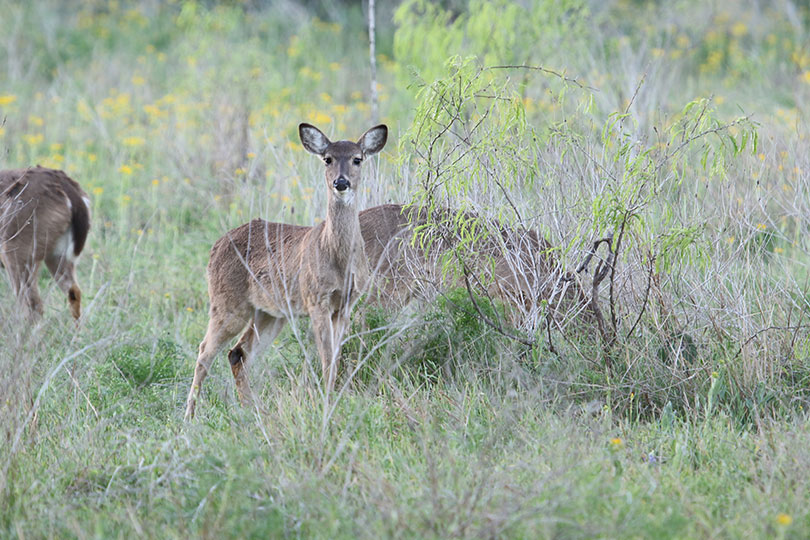By Jennifer Dorsett
Field Editor
Landowners who properly manage wildlife might be able to receive some tax benefits through wildlife management valuation of their land.
“Contrary to the way some describe it, this is not an exemption, it’s a valuation, meaning the property owner is not exempt of paying those property taxes,” Greg Simons, principal and general manager of Wildlife Systems and Wildlife Consultants, said in an interview with the Texas Farm Bureau Radio Network. “It’s simply a matter of their property being based on what would be considered an ag valuation, or in this case, a wildlife valuation, which is basically the same tax rate, the same tax basis.”
The property must already be appraised as agricultural or timber land to be converted to a wildlife management valuation, Simons noted.
Landowners are also required to perform at least three of seven wildlife management activities: habitat control or management; erosion control; predator control; providing supplemental supplies of water or food; providing shelter; and making census counts to determine population.
The land must be used to propagate sustaining breeding, migrating or wintering population of indigenous wild animals.
Simons cautioned it’s more complicated than feeding deer or saying certain wildlife management activities are taking place.
“The appraiser that’s evaluating the wildlife management plan and evaluating the practices holds the right to be able to look at degrees of intensity of whether or not that particular practice meets a certain intensity threshold that they can justify,” Simons said. “Just simply having a corn feeder out there that’s slinging a little bit of corn on the ground for some deer is likely not to be interpreted by an appraiser as having the level of intensity to satisfy the requirements of supplemental feeding in that case.“
To qualify for a wildlife valuation, a landowner also must create and submit a wildlife management plan to their county appraisal district. The plan includes information on the property’s history and current use, establishing landowner goals for the property and providing a set of activities designed to integrate wildlife and habitat improvement.
“That wildlife management plan is one of the central requirements. When legislation was passed in the state of Texas in 2001, it created some standardized protocols that are part and parcel to this,” Simons said. “There’s a template-type plan that must be constructed and then submitted to the country appraisal district. The plan does not have to be created by a Texas Parks and Wildlife Department (TPWD) biologist. It can be the landowner, as long as the plan is reasonably constructed, and the practices are built in there realistically.”
A wildlife valuation may be beneficial to a landowner who isn’t interested in or doesn’t have experience with traditional production agriculture but is interested in keeping the lower tax rate that comes with an agricultural land use valuation.
But Simons noted it doesn’t come without a price.
“The commercial rate as opposed to an ag or wildlife valuation rate is a mix. There’s a lot of disparity there. Naturally, that in itself incentivizes a landowner who owns property in rural areas to look at an ag valuation or wildlife valuation as a legitimate way of being able to afford to own that property and to afford to operate that property. But it’s going to come at another price,” he said. “It could be the financial price of having to pay to integrate some of those practices. It might come at a sweat equity price, just having to put a lot of elbow grease into the work that’s required to meet those practices. But if someone is not into traditional ag practices, they probably own that land for wildlife or recreation or aesthetic purposes anyway. Then, it’s kind of a natural fit at that point.”
More than the landowner benefits from good wildlife management, too.
“Generally, healthy wildlife habitat is part of providing a healthy environment for humans, as well as those functioning habitats that are productive nutrient cycles, productive water cycles,” Simons said. “If we can ensure that we have healthy open space, healthy wildlife habitat, and see how that translates into just a healthy environment for people, it’s a very profound part of what we’re talking about here when we advocate for a healthy Texas and healthy Texans.”
Click here for more information on converting an agricultural land valuation to a wildlife management use valuation.
A general overview of special land use appraisals is also available on the Texas Comptroller of Public Accounts website.

